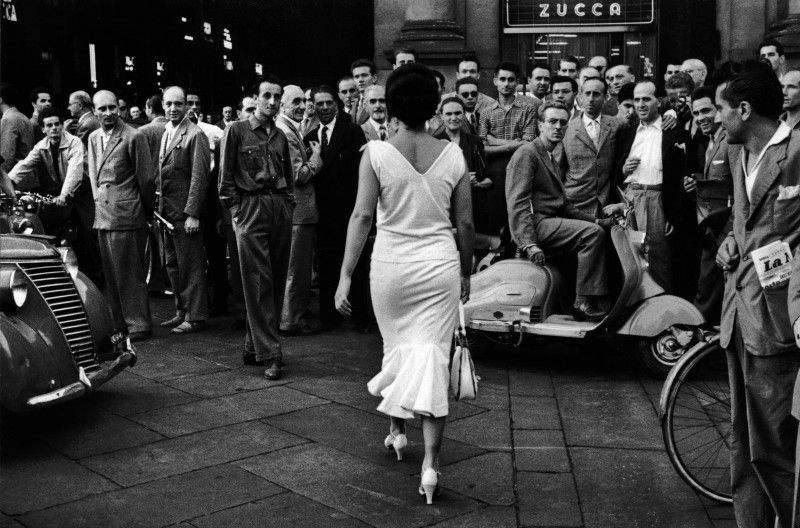Venice, at the Casa dei Tre Oci a major exhibition on Mario De Biasi with many unpublished works
The Casa dei Tre Oci in Venice presents the extensive retrospective Mario De Biasi. Photographs 1947-2003, dedicated to one of Italy’s greatest photographers, tireless storyteller of the world, Mario De Biasi (Belluno, 1923 - Milan, 2013). The exhibition, which traces the photojournalist’s entire production from the beginning of his collaboration with Epoca magazine to his last works, initially scheduled from March 12 to July 31, 2021, will open to the public from May 13 to January 9, 2022. It is curated by Enrica Viganò in collaboration with theMario De Biasi Archive, organized by Civita Tre Venezie with Admira and promoted by the Venice Foundation.
The result of in-depth research in the De Biasi archive, the exhibition brings together 216 photographs, half of them previously unpublished, and proceeds diachronically by thematic nuclei through ten sections, moving through the narrative of major historical events, exotic travels, portraits of powerful and famous people, scenes of everyday life, and anonymous faces, then flowing into the conceptual and abstract. “It was time!” notes curator Enrica Viganò. “The need was felt for an anthological exhibition celebrating Mario De Biasi’s talent in all its facets. The neo-realist photojournalist, the photojournalist of Epoca, the witness of history, the celebrity portraitist, the explorer of worlds near and far, the visual artist, the interpreter of mother nature, the compulsive and creative draughtsman. All his work is a hymn to life.”
Among the many previously unseen works, the Casa dei Tre Oci is exhibiting, for the first time, the entire sequence of De Biasi’s most famous and probably most beloved photograph, Gli Italiani si voltano, taken in 1954 for the weekly photo magazine Bolero Film and chosen by Germano Celant as the guiding image for his exhibition at the Guggenheim Museum in New York, The Italian Metamorphosis 1943-1968. A stunning Moira Orfei dressed in white strolls through downtown Milan, attracting the gaze of a group of men.
The 1950s constitute one of the centerpieces of the exhibition with images of anItaly devastated by war, where the desire for rebirth and reconstruction is nevertheless captured; memorable glimpses of New York City; or the close-up perspective of the 1956 Hungarian uprising, under the fire of bullets, which wounded De Biasi and earned him the title of Italian Madman. These are visual excerpts “from a 20th century that today seems distant,” points out Denis Curti, artistic director of the Casa dei Tre Oci, “but that never ceases to move curiosity.”
Two incredible shoots date back to 1964, testifying to De Biasi’s persistence: the one in Siberia, with temperatures below 65 degrees, and the one among the lava tongues of eruptingMount Etna. There is no shortage of moments of light-heartedness and everyday intimacy, which De Biasi investigated in all five content, with photos of kissing, street barbers and lunch breaks taken from London to Paris, Rome to Vienna, Cairo to Tehran, Thailand to Brazil, Israel to Nepal.
Also on display are images of the moon landing; his most famous portraits, including those of Sofia Loren, Brigitte Bardot, Fellini, and Maria Callas; and some of his countless trips, particularly to Hong Kong, South America, and India. The last section focuses on his love for nature, whose forms and signs are revisited, rendered in photos as a kind of “visual poetry.”
Alongside the photographs, many materials, volumes, original issues of Epoca magazine, some telegrams, including those of Enzo Biagi and Arnoldo Mondadori, notebooks and two audiovisual insights will be exhibited. Laura Leonelli ’s interview in which Mario De Biasi recounts his experience as a photographer, and a slide show of images, selected by his daughter and head of the Archives, Silvia De Biasi, with reports for the Epoca series entitled The Wonders of the World.
Besides being a great photographer, Mario De Biasi, a lover of art and painting, was also an original draftsman. A universe of strong hues and infinite imagination will “clothe” the Casa dei Tre Oci, restoring stylistic continuity to the layout along the three floors of the neo-Gothic palace with the depiction of suns, eyes, heads and hearts. “The Casa dei Tre Oci is a wonder for the eyes, in itself,” says Enrica Viganò. And its complex and versatile structure stimulates us curators to invent new solutions for the exhibition itinerary. The exhibition on De Biasi is spectacular in all its originality and richness of content."
Accompanying the exhibition is a catalog published by Marsilio with essays by Enrica Viganò, Denis Curti and Angelo Ponta.
Radio Monte Carlo is the official radio station for the exhibition.
For all information you can visit the official website of the Casa dei Tre Oci.
Pictured: Mario de Biasi, Gli italiani si voltano, Milan, Italy.
 |
| Venice, at the Casa dei Tre Oci a major exhibition on Mario De Biasi with many unpublished works |
Warning: the translation into English of the original Italian article was created using automatic tools. We undertake to review all articles, but we do not guarantee the total absence of inaccuracies in the translation due to the program. You can find the original by clicking on the ITA button. If you find any mistake,please contact us.



























